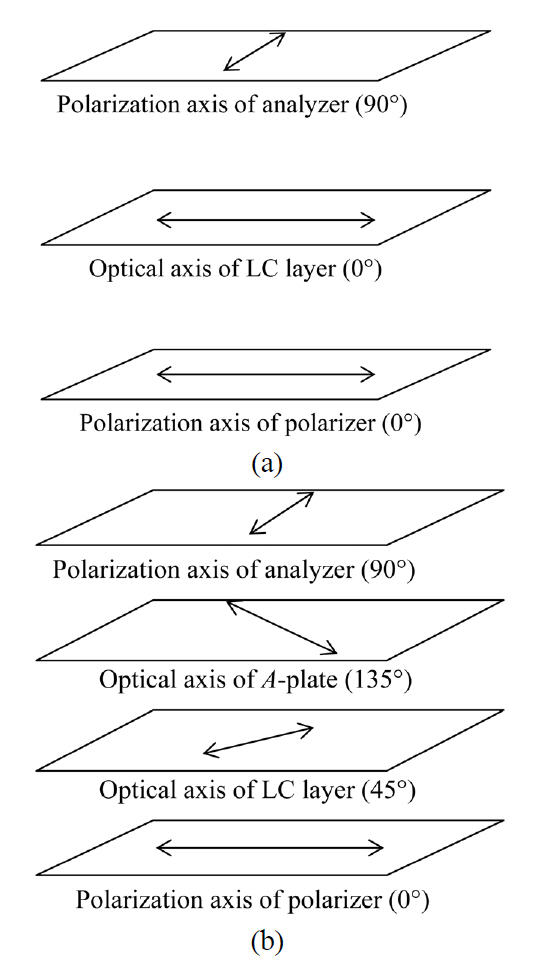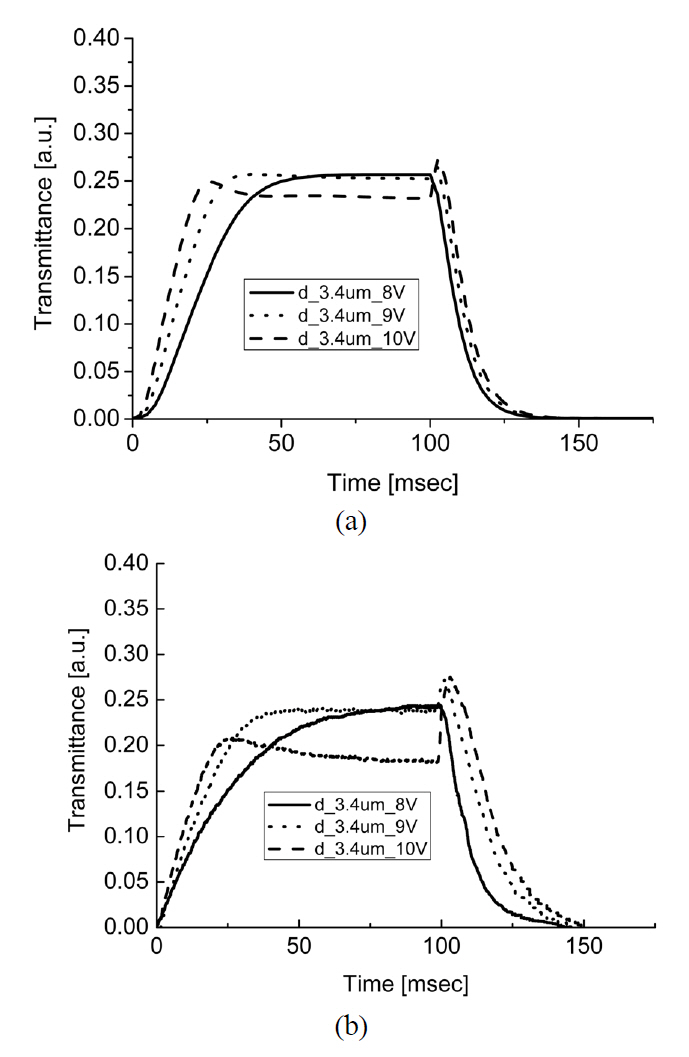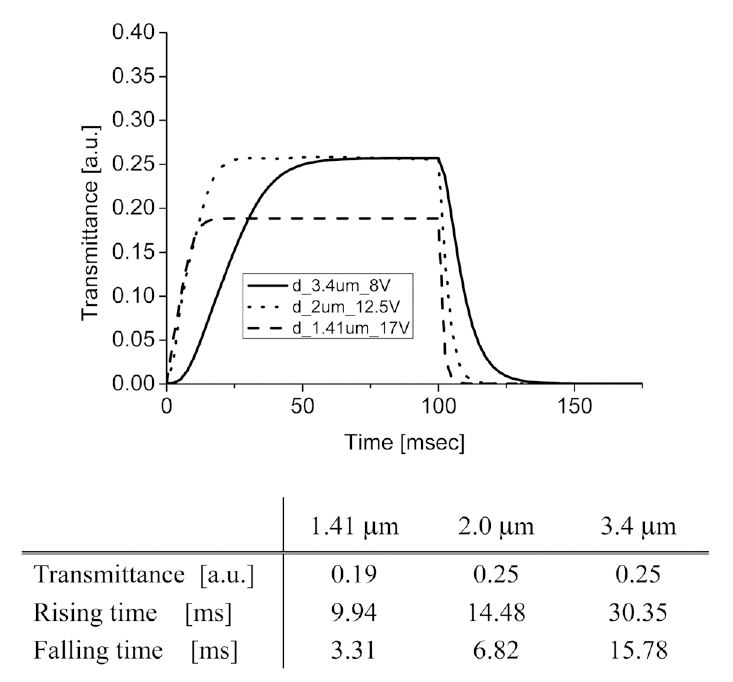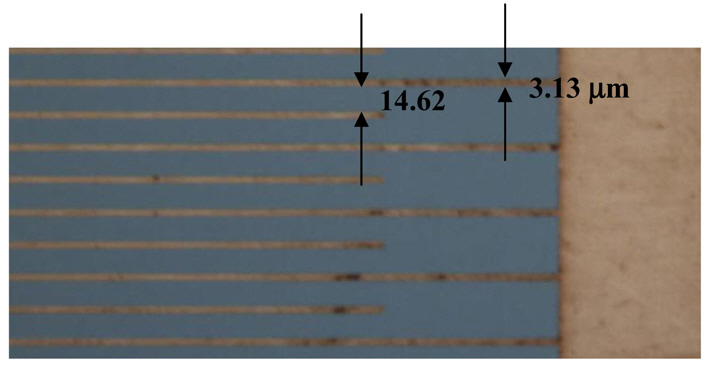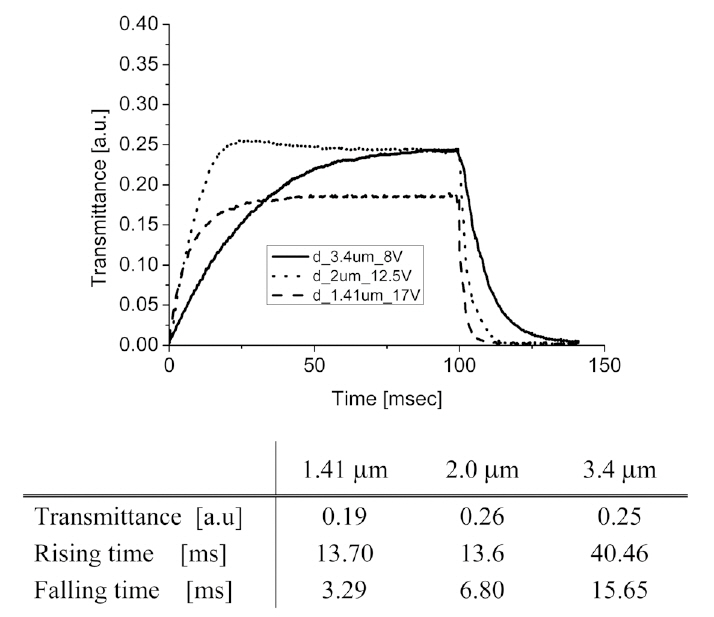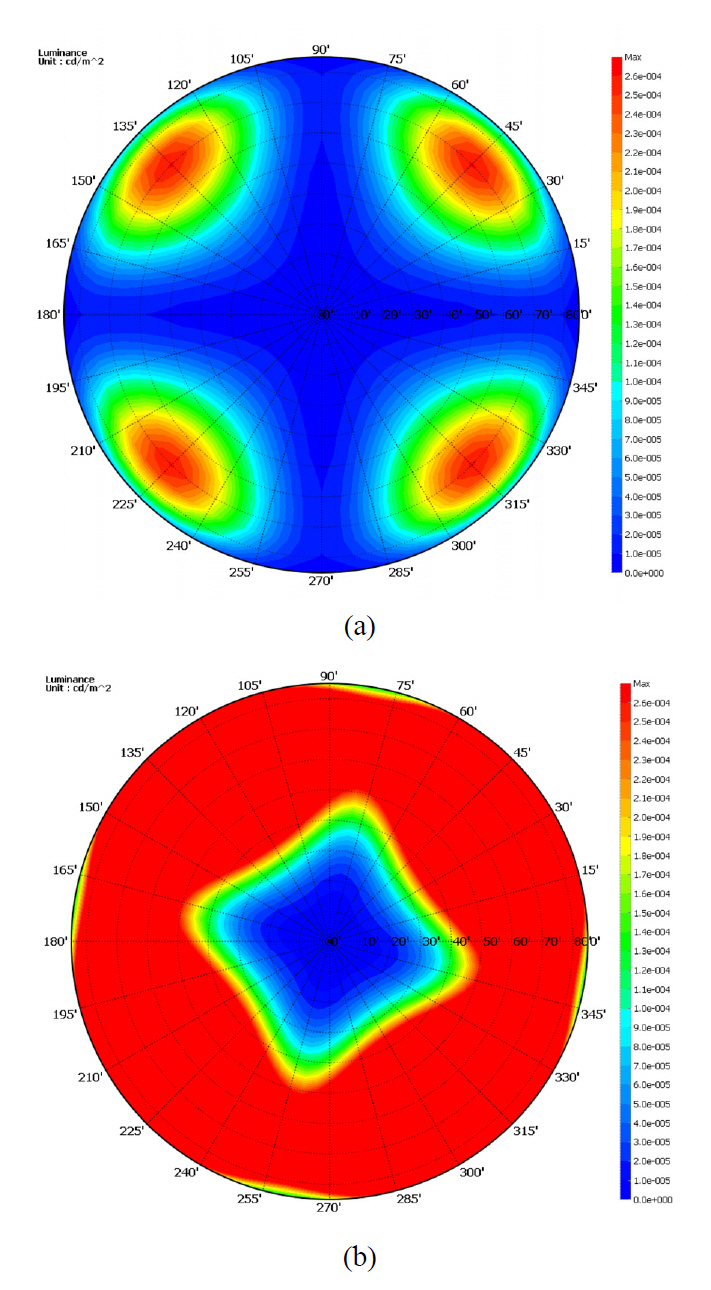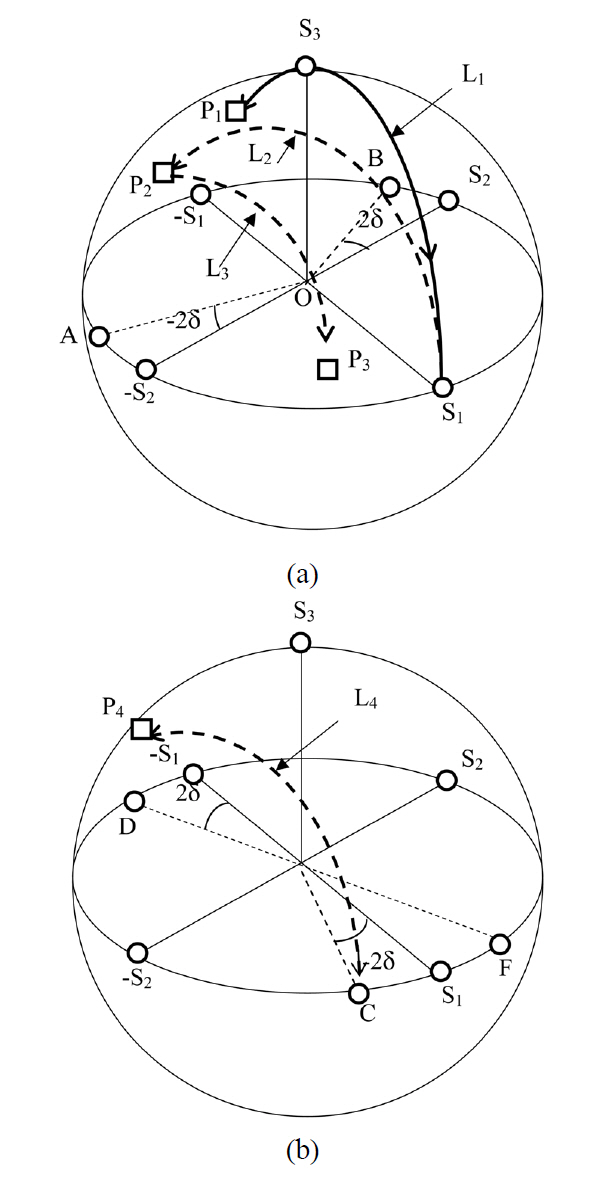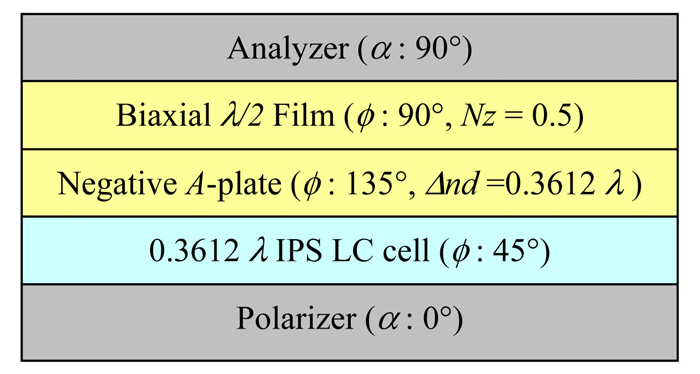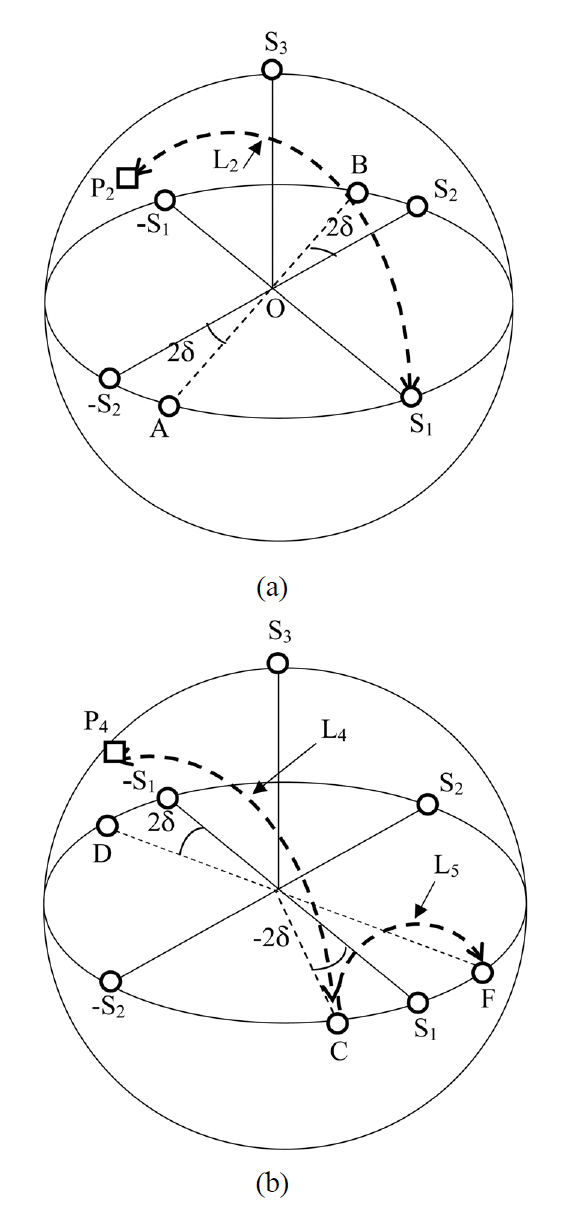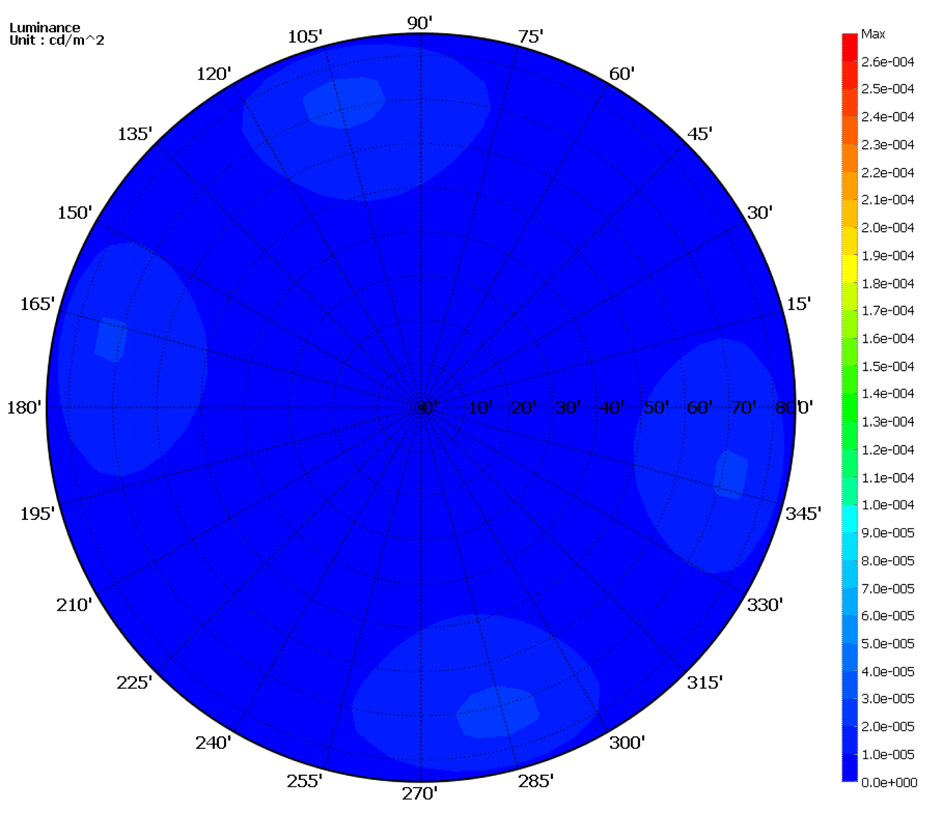



In this paper, we propose an in-plane switching (IPS) mode for liquid crystal displays (LCDs) that,in principle, is free of retardation of the LC cell. Basically, the optical configuration of the LC cell consists of an A-plate and an LC layer for switching between the dark and bright states. We could achieve a fast response time compared with the conventional in-plane LC cell because the free retardation condition of the proposed LC cell enables us to reduce the cell gap even by quarter-wave retardation without any change of the optimized LC material in the transmissive mode. Experiments for verification of the proposed in-plane switching LC cells have shown a significant reduction of the rising time and falling time simultaneously due to the small cell gap. Furthermore, we also proposed an optical configuration for wide viewing property of the retardation free IPS LCD by applying the optical films. We proved the wide-view property of the retardation free IPS LCD by comparing its optical luminance with the calculated optical property of the conventional IPS LCD.
As many people are more familiar with the widespread information-oriented society, further progress toward highdisplay quality is needed to use the display devices as informational interfaces. In particular, the in-plane switching (IPS)LC mode [1] and the vertical alignment LC mode [2, 3] are representative LCD modes for the required electro-optical characteristics in the current display devices, such as a wide-angle viewing, color shift and so on. In terms of the response times, however, all advanced LCD modes, including IPS LC cells, do not show sufficient high-speed properties for video rate images, despite the development of technologies that improve the response time. In particular, display devices are recently being required for application to the 3D moving pictures that need fast-response LCDs in order to minimize the cross-talk [4-6], so that development of high speed and high quality LCDs is needed.
In general, the response time of an IPS LC cell is defined by the summation of the rising time and falling time when voltage is applied. These variables can be calculated as follows [7]:
Where,
From the Eq. (1), we can see that the response time can be improved by controlling the parameters of the LC cells.First, there can be an improvement of the LC material that permits small viscosity
In this paper, we propose a configuration of a retardation free (RF) IPS LC cell for a fast response time by adding an A-plate. This optical configuration is not affected by the retardation of the LC cell if it has more than quarterwave retardation. Therefore, we can reduce the cell gap d as the process permits for a faster response time without any changes in the LC materials. We calculated the electrooptical characteristics of the RF LC configuration in order to compare the calculated results to the conventional IPS LC cells. In addition, we also propose an optical configuration of the RF IPS LCD with wide viewing angle. The wide-view IPS LCD, therefore, can provide the fast response time and the wide viewing angle simultaneously.
II. OPTICAL RESPONSE OF THE RF IPS LC CELL
The basic optical configuration of a conventional IPS LC cell consists of two crossed polarizers and an LC cell with half-wave retardation as shown in Fig. 1 (a). The initial state of the LC cell has an optical axis parallel to the input polarizer. Then, the light passing through the input polarizer cannot experience optical retardation, even if it passes through the LC cell, because the polarization axis of the input polarizer and the optical axis of the LC cell coincide. Therefore, the polarization of the light in front of the output polarizer stays perpendicular to the polarization axis of the polarizer, so that we can achieve a dark state.For a bright state, the effective optical axis of the LC layer should rotate to 45° by the applied voltage and the LC layer should show half-wave retardation. Then, the light passing through the input polarizer experiences half-wave retardation, so that the polarization of the light passing through the LC layer rotates 90° in front of the output polarizer,which parallels the polarization axis of the output polarizer.Thus, we can achieve a bright state. In this case, we can make a half-wave LC cell with an excellent bright state that
depends strongly on the retardation
Compared with a conventional LC cell, the RF LC cell is independent on the retardation of the LC layer, in principle,if it has more than quarter-wave retardation. Figure 1 (b)shows the basic optical configuration of the RF IPS LC cell that is sequentially stacked by an A-plate with an LC layer between the two crossed polarizers. The A-plate in the cell should have exactly the same retardation as the LC layer, and its optical axis is exactly crossed to the optical axis of the LC layer. In the no-voltage state, the light passing through the input polarizer will pass through the LC layer, so that the polarization of the light passing through the LC layer will be changed to the other polarization state. However, the polarization state of the light will return to the polarization axis of the input polarizer by passing through the
The rotational angle σ of the effective optical axis of the LC layer for the bright state depends on the retardation of the used Δnd of the LC layer and the A-plate, which means that the rotational angle of the effective optical axis of the LC layer should be determined so the total retardation of the effective Δnd of the LC layer (ΔndLC_effective) and the A-plate (ΔndA_plate) as to be λ/2 for the excellent bright state. The range of the rotational angle of the effective optical axis of the LC layer can be π/4 to π/2. At π/4 rotation, the (ΔndLC_effective) is 0 because the optical axis of the LC layer is coincident or perpendicular to the polarization axis of the polarizer. In contrast, at π/2 rotation, the (ΔndLC_effective) is maximized because the optical axis of the LC layer makes π/4 as for the polarization axis of the polarizer. Therefore, if the Δnd of the LC layer and the A-plate are quarter-wave, which means ΔndLC_effective +ΔndA_plate = λ/2, then should be π/2. And if the Δnd of the LC layer and the A-plate are half-wave, which means ΔndLC_effective +ΔndA_plate = λ, then should be π/4. At middle range of the ΔndLC_effective +ΔndA_plate between λ/2 to λ, we can assume that the should be linearly changed between π/4 to π/2. From this, we can simply calculate the equation (ΔndLC_effective +ΔndA_plate) σ = (λπ)/4 for determining the σ. As a result, the effective rotation angle of the LC director can be described as below:
To compare the optical response of the RF IPS cell with conventional LCD, we started to investigate the appropriate driving voltage of the conventional IPS cell. For this calculation, we applied a single domain IPS LC cell that has a 3.13 ㎛ electrode width and 14.62 ㎛ of space between the electrodes. Figure 2 (a) shows the calculated optical response of the conventional IPS cell as a function of the voltage applied for 100 ms to the cell. The used LC material is ML-0249, which was made by Merck, (
As described, the RF IPS LC cell uses the optimized LC material which is used in a conventional LCD (ML-0249),because the
configuration with quarter-wave retardation (cell gap d =1.41 ㎛) and 0.3612-wave retardation (cell gap
reduced significantly because of the low cell gap and the optimized LC materials. Especially, we can look into the falling time, which is the most important time because it is uncontrollable with applied voltage, but it depends on the LC materials’ properties, and it can be decreased compared with the conventional IPS LC cell. In contrast,we can also observe that the RF IPS LC cell requires a higher voltage compared with the conventional IPS cell because of a low cell gap. In spite of this deficit, we can expect the fast response IPS LC cell without significant voltage loss by using the RF optical configuration. For example, the 0.3612-wave retardation cell, which requires more than 4V or 5V compared to the conventional cell, can reduce falling time over 57% compared with the conventional IPS LC cell without a loss of the transmittance. This may be not suitable for mobile application, but is suitable for high speed LCD application such as the 3D TV.
To verify the improvement of the optical response to the RF IPS LC cell, we made an experiment to measure the optical properties with the same conditions and calculations. Figure 4 shows the microphotograph of a single domain IPS LC cell. The width of the electrode and the spatial interval between the electrodes are 3.13 ㎛ and 14.62 ㎛,respectively, which are the same as for the calculation condition. The alignment layer is spin-coated. We set uniformly cell gap by using a ball spacer. Also, the A-plate which has the same retardation as the LC layer and its optical axis is crossed to the optical axis of the LC layer was attached on the LC cell.
Figure 5 compares the measured optical response of the RF IPS LC cells with the conventional IPC LC cells. In the figure, we could confirm that the RF IPS LC cell can reduce the response time due to a low cell gap without any degradation of the transmittance of the bright state.Especially, the low cell gap of the RF IPS LC cell can provide the very fast falling time in the response time.
III. AN OPTICAL CONFIGURATION OF THE RF IPS LC CELL FOR WIDE VIEWING ANGLE
In general, degradation of the optical viewing angle of the LC cell in oblique incidence can have several reasons such as the change of the optical axis and the retardation of the optical retarder that is used, the change of the polarization axis of the polarizer in oblique incidence [7, 8]. In terms of the polarizer and the A-plate, if we apply the very small birefringence approximation (
where α is the azimuth angle of the axis of the polarizer,and
where ΓA represents the phase retardation of the
In spite of the optical merits of the RF IPS LC cell, we can predict the narrower optical viewing angle compared to the conventional IPS LC cell because all principle axes and the
Figure 6 shows the light luminance of the conventional IPS LC cell and the RF IPS LC cell in the dark state.Retardations of the LC material used and of the
Figure 7 (a) shows why the light leakage of the RF IPS LC cell happens in the horizontal and vertical directions on the Poincare sphere. In the normal direction, the positions of the polarizer and the LC layer lie on
As for the diagonal direction, we can predict more serious light leakage. Figure 7 (b) shows the light leakage of the cell in the diagonal direction on the Poincare sphere. In the diagonal direction, the polarization axis of the polarizer and the analyzer are changed with deviation angle δ, which are positions
and it will rotate back to the position
In order to enhance the optical viewing angle of the RF IPS LC cell in the dark state, we propose a wide-view RF IPS LC cell that can protect the light leakage in oblique directions as shown the Fig. 8. We apply a negative
In the horizontal and vertical directions, we observed the change of the optical axis and the Δnd of the LC layer and the
direction exactly as shown in Fig. 9 (a). The deviation angle of the optical axis of the negative
the negative
In the diagonal direction, the biaxial λ/2 plate can move the deviated polarization of the light passed through the LC layer to the opponent position F against the position of the polarization axis of the analyzer on the Poincare sphere as shown in Fig. 9 (b). As we described in Fig. 7(b), the polarization position of the light passed through the LC layer and the negative A-plate is on the position C.For oblique diagonal incidence, positions C and F deviated with -2δ and 2δ from the position S1 on the Poincare sphere.Therefore, we can move the polarization of the light on the position
Figure 10 shows the calculated iso-luminance of the wide-view RF IPS LCD in the dark state. Iso-luminance in the Fig. 10 shows the excellent dark state compared to the conventional IPS LC cell.
We proposed an IPS LC cell, that is free of retardation,by using an applied
